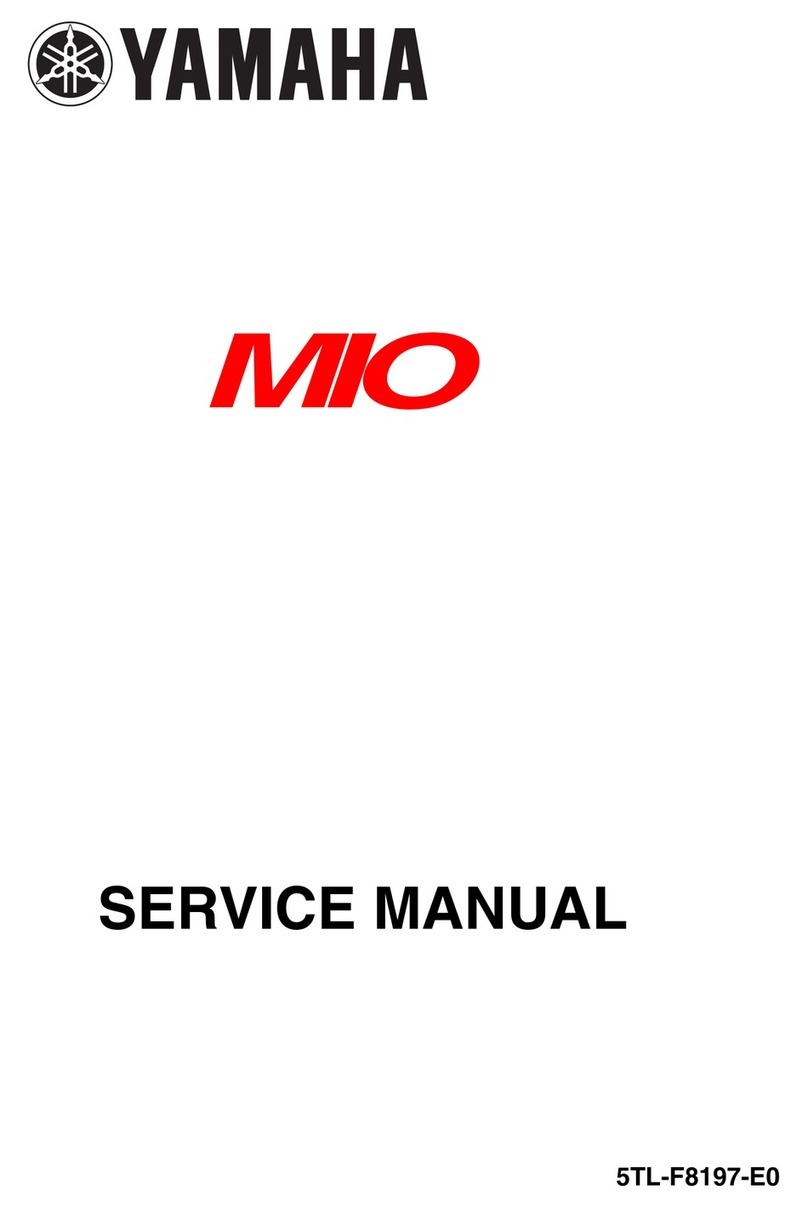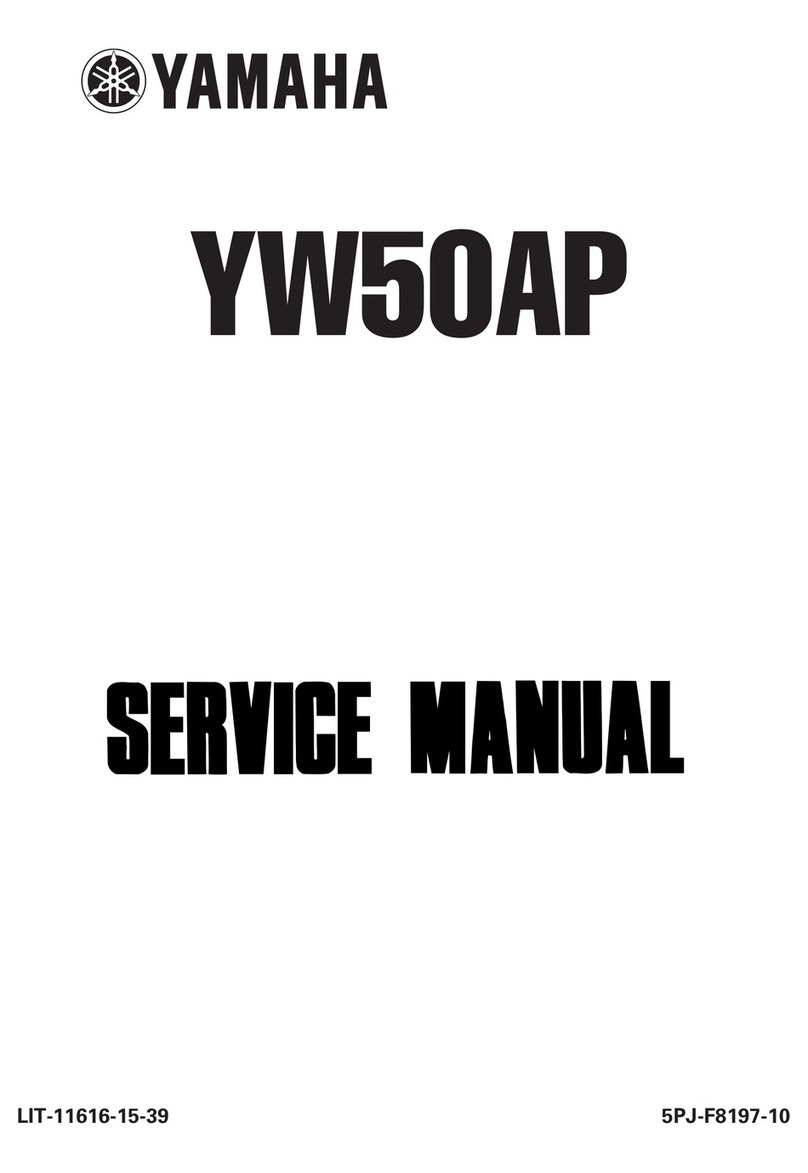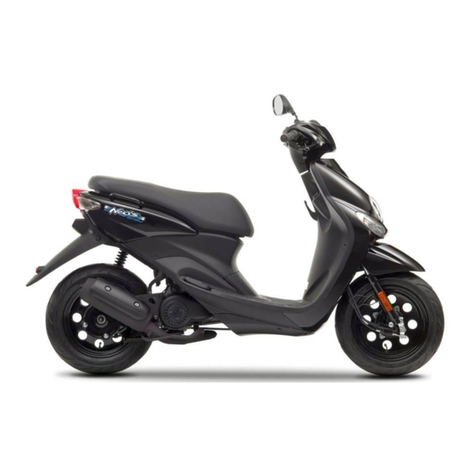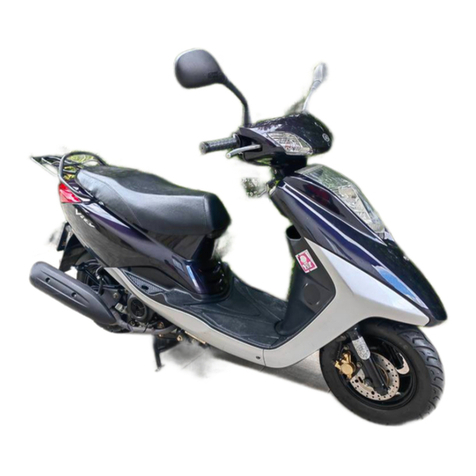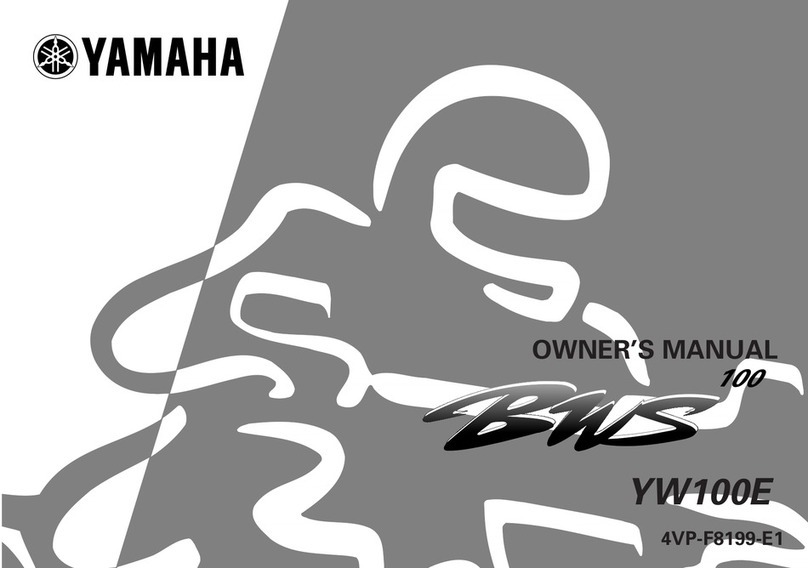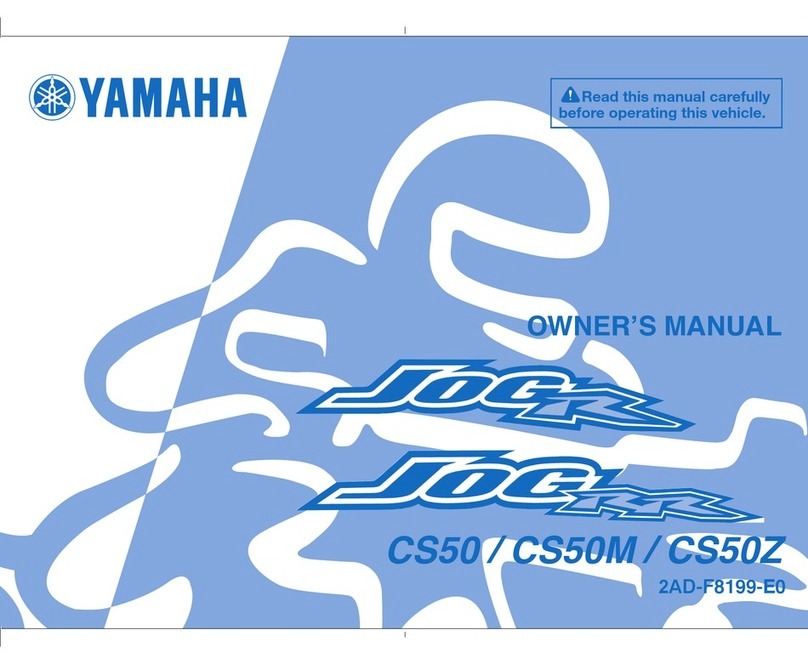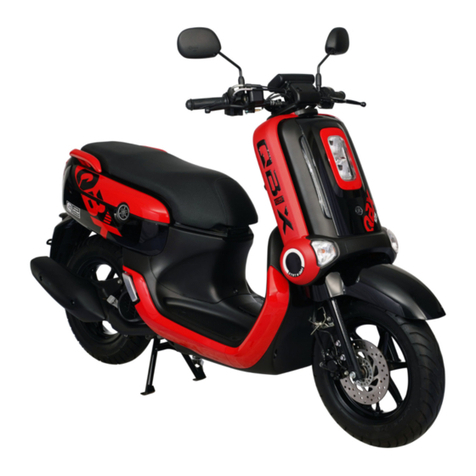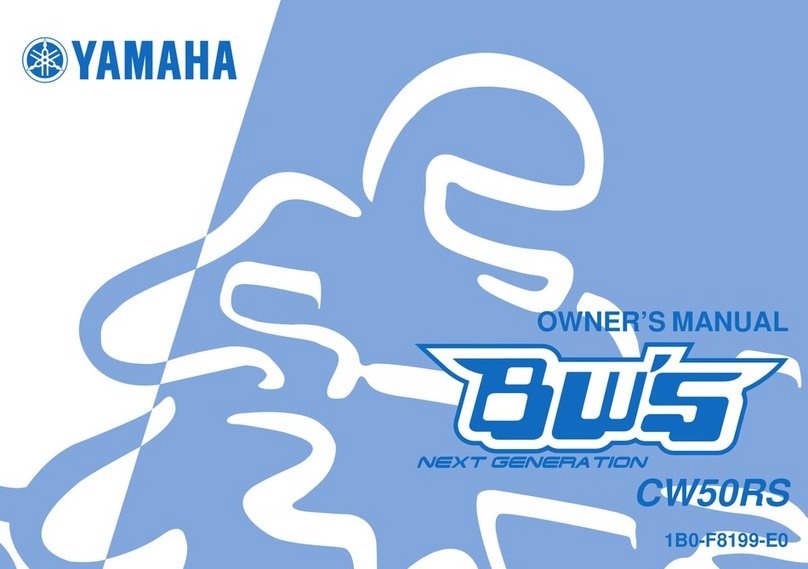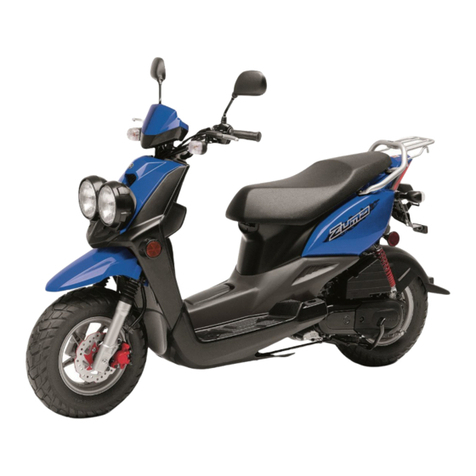
TABLE OF CONTENTS
SAFETY INFORMATION .................... 1-1
Further safe-riding points ................. 1-5
DESCRIPTION.................................... 2-1
Left view........................................... 2-1
Right view......................................... 2-2
Controls and instruments ................. 2-3
INSTRUMENT AND CONTROL FUNC-
TIONS.................................................. 3-1
Main switch/steering lock ................. 3-1
Indicator lights and warning lights.... 3-2
Multi-function display........................ 3-3
Handlebar switches.......................... 3-7
Front brake lever.............................. 3-7
Rear brake lever............................... 3-8
Fuel tank cap.................................... 3-8
Fuel .................................................. 3-9
Catalytic converter ......................... 3-10
Seat................................................ 3-11
Passenger footrest......................... 3-12
Front storage compartment............ 3-12
Rear storage compartment ............ 3-13
Shock absorber assembly.............. 3-13
Carrier ............................................ 3-14
Luggage holder .............................. 3-14
FOR YOUR SAFETY - PRE-OPERATION
CHECKS ............................................. 4-1
OPERATION AND IMPORTANT RIDING
POINTS ............................................... 5-1
Starting the engine........................... 5-1
Starting off........................................ 5-2
Acceleration and deceleration.......... 5-2
Braking............................................. 5-2
Tips for reducing fuel consumption .. 5-3
Engine break-in................................ 5-3
Parking............................................. 5-4
PERIODIC MAINTENANCE AND
ADJUSTMENT.................................... 6-1
Owner’s tool kit................................. 6-2
Periodic maintenance chart for the
emission control system................... 6-3
General maintenance and lubrication
chart.............................................. 6-4
Removing and installing the cowling
and panels .................................... 6-7
Checking the spark plug................... 6-9
Engine oil and oil strainer............... 6-10
Final transmission oil...................... 6-12
Coolant........................................... 6-13
Air filter and V-belt case air filter
elements ..................................... 6-15
Checking the engine idling speed .. 6-16
Checking the throttle grip free
play ............................................. 6-16
Valve clearance.............................. 6-17
Tires ............................................... 6-17
Cast wheels.................................... 6-19
Checking the front brake lever free
play ............................................. 6-19
Adjusting the rear brake lever free
play ............................................. 6-19
Checking the front brake pads and
rear brake shoes......................... 6-20
Checking the brake fluid level ........ 6-21
Changing the brake fluid ................ 6-22
Checking and lubricating the
cables ......................................... 6-22
Checking and lubricating the throttle
grip and cable ............................. 6-23
Lubricating the front and rear brake
levers .......................................... 6-23
Checking and lubricating the
centerstand................................. 6-23
Checking the front fork................... 6-24
Checking the steering .................... 6-25
Checking the wheel bearings......... 6-25
Battery............................................ 6-25
Replacing the fuses........................ 6-27
Replacing a headlight bulb............. 6-28
Tail/brake light................................ 6-29
Replacing a front turn signal light
bulb............................................. 6-29
Replacing an auxiliary light bulb..... 6-30
Replacing a rear turn signal light
bulb............................................. 6-31
License plate light .......................... 6-31
Troubleshooting ............................. 6-32
Troubleshooting charts................... 6-33
53B-F8199-E0_CS.indd 653B-F8199-E0_CS.indd 6 2011/11/01 12:32:072011/11/01 12:32:07
Process BlackProcess Black
